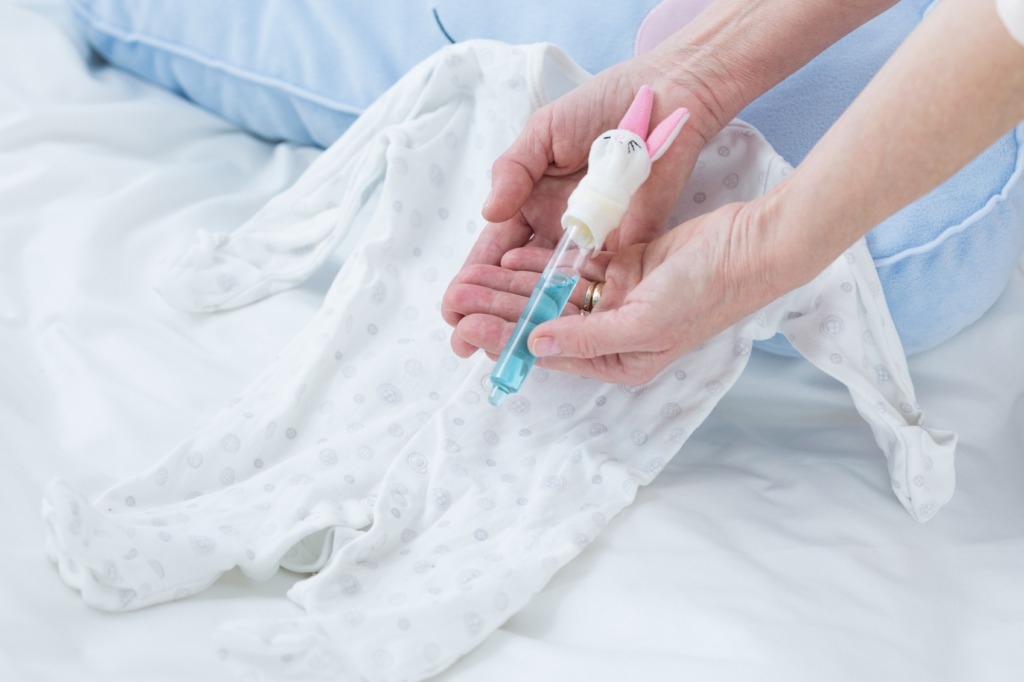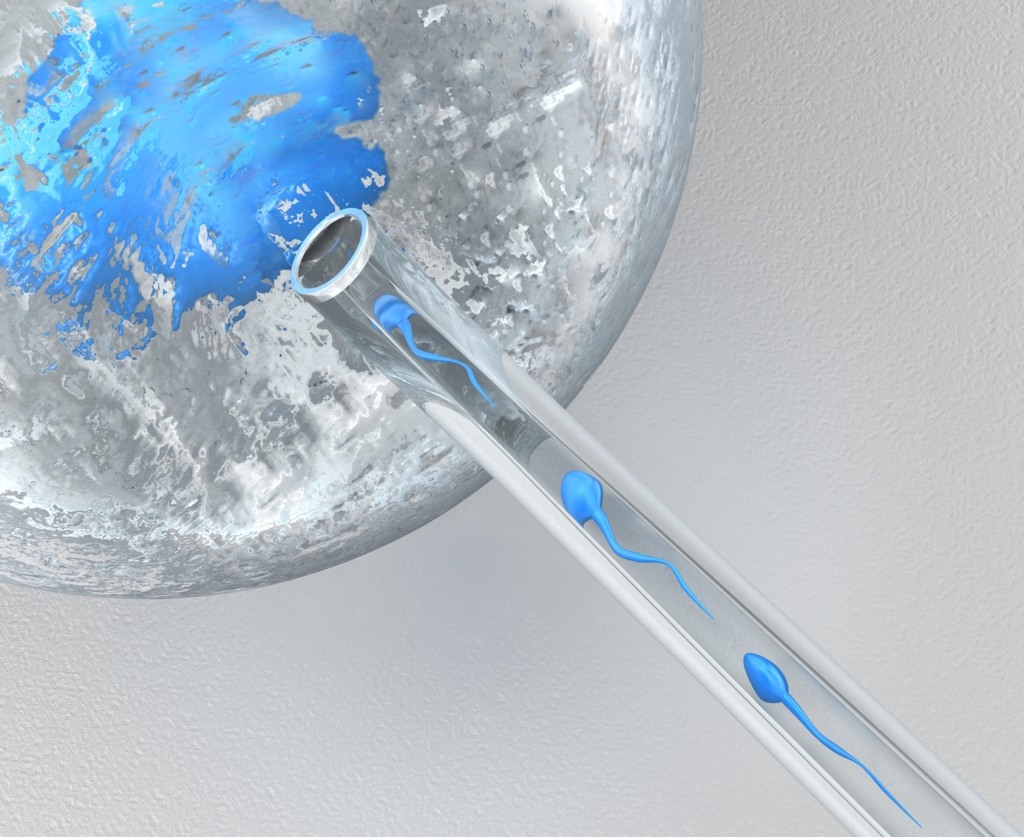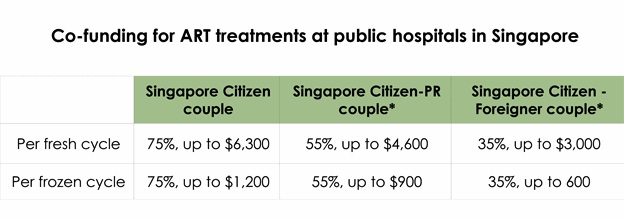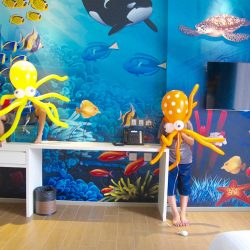SingaporeMotherhood | Pregnancy
July 2016
IVF in Singapore: Is It Getting More Affordable?

When you have been having issues trying for a baby, the decision as to whether or not to undergo IVF and other fertility treatments is usually a daunting one. In addition to the physical, mental and emotional stress, the financial burden that you’re taking on is also often a big one. A Ministry of Health (MOH) Information Paper: 2004/05 entitled In-Vitro Fertilisation (IVF) In Singapore: Charges And Success Rates, listed the following fertility treatments, known collectively as Assisted Conception Procedures (ACP):
Fertility Treatment Options

In-Vitro Fertilisation (IVF)
Following stimulation of the ovary, eggs are recovered and the eggs are mixed with a man’s sperm in a laboratory dish. Fertilisation occurs in the laboratory, and the resulting embryos (up to three) are subsequently transplanted into the woman’s body. Excess embryos are frozen for later use. A special type of IVF is Intracytoplasmic sperm injection (ICSI), in which a single sperm is injected directly into a single egg in the laboratory and the resulting embryo is transplanted into the woman’s body.
Gamete Intrafallopian Transfer (GIFT)
The Gift procedure is similar to IVF except that fertilisation takes place in the woman’s body, instead of the laboratory.
Artificial Insemination
A procedure whereby the man’s sperm is injected artificially into the woman’s body.
(See also: The ART of Making Babies)
More Affordable Treatments
The most common type of fertility treatment is IVF and according to the MOH paper, 1,569 couples underwent IVF treatments in 2002, with about 70 per cent of them doing it in public hospitals.
Each cycle costs at least $10,000. Thankfully, there have been some changes recently which has made such treatments more affordable to Singaporeans.
Since 1 January 2013, MOH has provided Singaporean couples with government co-funding for Assisted Reproduction Technologies (ART) treatment at public hospitals (see table below). The co-funding is available for a maximum of three fresh and three frozen ART cycles.
* at least one member of the couple must be a Singapore citizen
All standard procedures such as ovarian stimulation, thawing of the embryo and embryo transfer can be considered for this co-funding. But initial investigations and consultations – basically, anything prior to starting any fertility treatment – are not included. Couples are also eligible for the co-funding if they already have children. However, this co-funding has an age cap of 40 (at the start of the cycle).
Couples don’t need to apply for the co-funding; all that’s needed is to fill in a declaration form at the clinic, which will then be used to check their eligibility for it. Once eligibility is confirmed, it will be incorporated into their bill.

Lifting the Cap
Medisave can also be used for covering the costs of ACPs, at both public and private fertility centres.
Previously, couples could only claim from Medisave for three cycles, with a Medisave withdrawal limit of $6,000 for the first treatment cycle, $5,000 for the second treatment cycle, and $4,000 for the third treatment cycle.
But since 1 October 2013, the MOH lifted this three-cycle cap for Medisave claims and couples can now claim for their fourth and subsequent cycles, subject to a $4,000 limit each. However, the cumulative amount of Medisave allowed for ACP treatments remains at $15,000.
Such limits are set on Medisave withdrawals so as to ensure that Medisave funds are not prematurely depleted. This is because the government fund is meant primarily for hospitalisation and the bulk of such expenses are more likely to take place at a later stage in a person’s life.
More Couples Trying
These changes have certainly helped Singaporeans in accessing fertility treatments. Thanks to the increase in funding, fertility treatments are now more affordable and there has been an increase in the number of couples trying for a baby through such methods.

An article in The Straits Times on 22 March 2016 revealed that, according to preliminary figures from the MOH, 6,044 assisted reproduction cycles were done in Singapore last year, making it the second year that the demand has crossed the 6,000 mark. In 2013, some 5,519 cycles were done, and in 2012, the figure was below 5,000.
The article also quoted Dr Sadhana Nadarajah, director of the KKIVF Centre at KK Women’s and Children’s Hospital, as saying: “The increase in the number of couples seeking treatment may be due to improving pregnancy rates, better awareness and increased affordability.”
In total, the MOH co-funded 3,512 assisted reproduction cycles last year, up from 3,173 cycles in 2014 and 2,749 cycles in 2013. There are a total of eight private fertility centres in Singapore, as well as three at public hospitals (KKIVF Centre at KK Women’s and Children’s Hospital, Centre for Assisted Reproduction (CARE) at Singapore General Hospital and Clinic for Human Reproduction (CHR) at National University Hospital).
(See also: A New Centre for Fertility)
However, because co-funding is not extended to private fertility centres, public hospitals remain a popular choice. In 2014, 62 per cent of couples went to public centres for fertility treatment, an increase from 54 per cent in 2012.
Visit the MOH website for more details.
All content from this article, including images, cannot be reproduced without credits or written permission from SingaporeMotherhood.
Follow us on Facebook, Instagram, and Telegram for the latest article and promotion updates.






